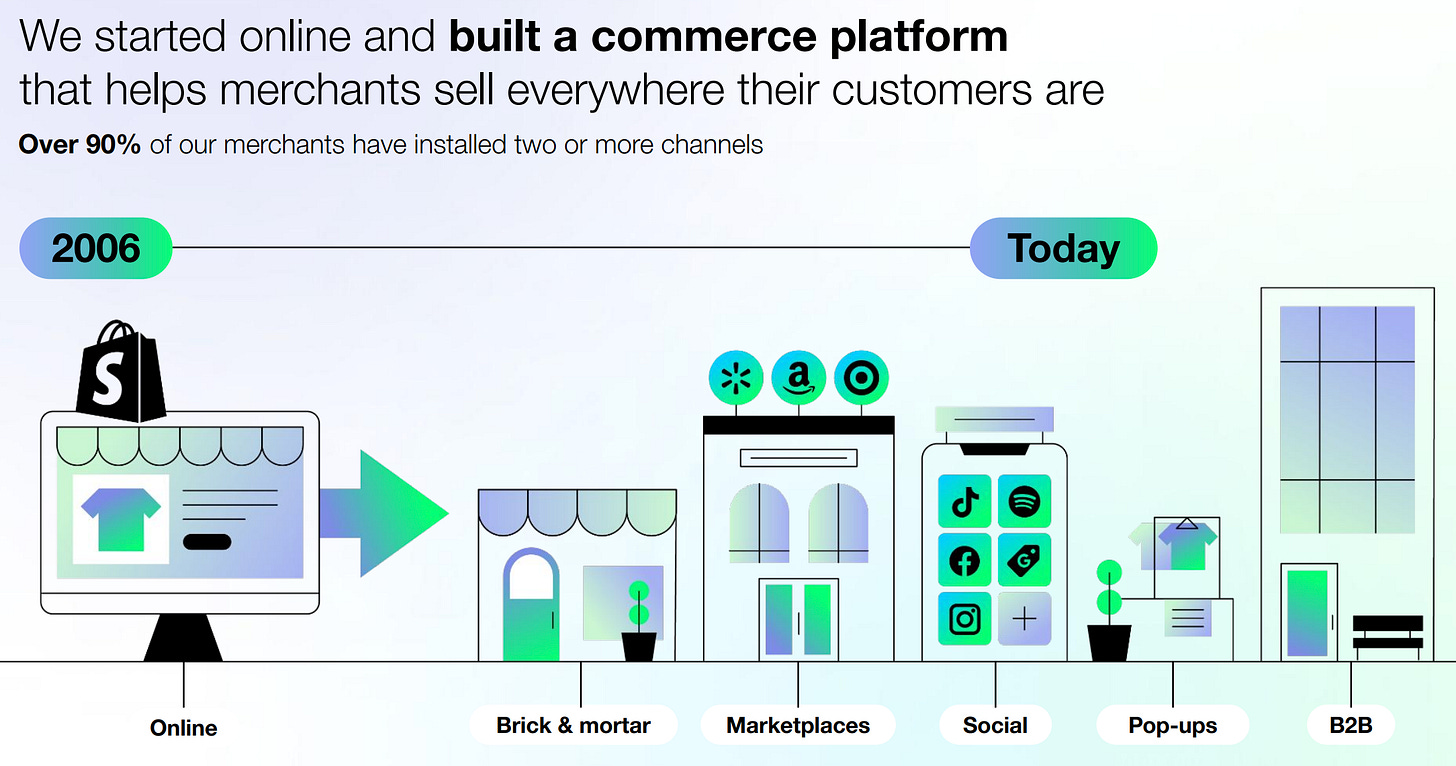Deep Dive: Shopify - The Operating System of Commerce
This edition of Fintech Wrap Up dives into Shopify’s expansive product ecosystem, business strategy, financial performance, and how new bets like B2B, payments, and AI are shaping its future
TL;DR:
Shopify is no longer just an ecommerce website builder—it’s evolved into a global commerce operating system powering millions of businesses across 175+ countries. In Q1 2025, Shopify posted $2.4B in revenue (+27% YoY) and processed $292B in GMV for 2024, proving its model of growing alongside its merchants is working. The company is expanding aggressively into enterprise, B2B, offline retail, and cross-border commerce, while layering on fintech products like payments, lending, and bill pay.
Shopify Payments now processes 62% of GMV, the Shop app drives customer acquisition, and Shopify Magic brings AI-powered automation to merchants. With only ~2% penetration of its $849B revenue opportunity, and seven straight quarters of positive free cash flow, Shopify is balancing rapid growth with disciplined profitability. It’s building the infrastructure to power every kind of sale—online, in-store, B2B, global—cementing its role as the backbone of modern commerce.
Let’s dive in!
Shopify’s Bold Play for “Every Corner of Commerce”
Shopify’s scale in commerce is staggering. The company reported $2.4 billion in revenue in Q1 2025, a 27% year-over-year jump. Gross merchandise volume (GMV) flowing through Shopify’s platform continues to surge – since its 2006 launch, Shopify has facilitated over $1.2 trillion in global commerce. In 2024 alone, more than 875 million unique shoppers purchased from Shopify merchants. Shopify now powers millions of merchants across 175+ countries, giving it an over 12% share of the U.S. ecommerce market – an extraordinary penetration for a company that started as a tiny Canadian snowboard shop’s website.
Shopify’s growth at scale is notably robust. In 2023, revenue grew about 20%, and in 2024 it accelerated to 24% year-over-year. GMV has also expanded at ~26% yearly in recent years, reaching roughly $292 billion in 2024 GMV. This means Shopify is not only growing, but gaining market share in global retail. As management notes, the company has sustained 20%+ GMV and revenue growth at scale for the past two years – a feat in a maturing ecommerce landscape. Shopify’s model of sharing in merchant success (“when our merchants become more successful, Shopify becomes more successful”) is clearly working.
Shopify Snapshot (Q1 2025): Shopify’s recent investor deck highlights its scale and growth – $2.4B revenue in Q1 2025 (27% YoY), $1.2T in total commerce since inception, 875M+ shoppers in 2024, and >12% of U.S. ecommerce share. These figures underscore Shopify’s outsize presence in global commerce.*
From Online Stores to a Unified Commerce Operating System
How did Shopify get here? By relentlessly expanding its platform’s scope. Shopify started with online storefronts, but today it has evolved into a “unified operating system for commerce anywhere, anytime”. Over 90% of Shopify merchants now sell through two or more channels – not just their online website, but also brick-and-mortar point-of-sale, marketplaces, social media, pop-up shops, etc.. Shopify’s platform knits together these channels so that a merchant can run an omnichannel business with a single unified back-end.
Keep reading with a 7-day free trial
Subscribe to Fintech Wrap Up to keep reading this post and get 7 days of free access to the full post archives.




